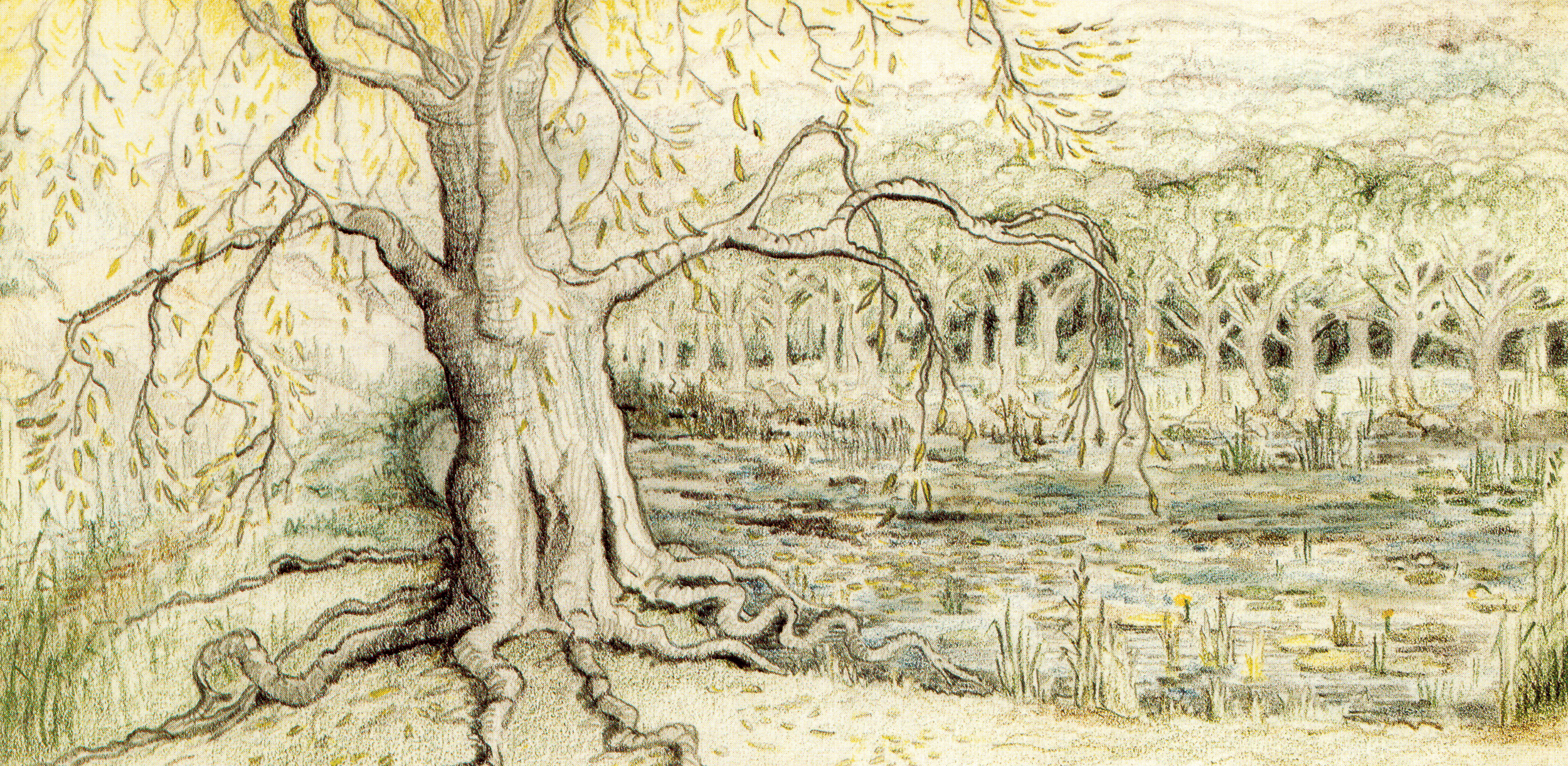
21 May Staff Note: Leaf by Niggle
I am not in the habit of assigning nicknames to legendary authors. Even if I was strongly encouraged to try, I don’t think I’d ever land on “Niggle” for J. R. R. Tolkien. And yet, that is the name he assigns himself in the autobiographical short story, Leaf by Niggle.1 I discovered it while reading the introduction to Tim Keller’s book, Every Good Endeavour, and it has transformed the way that I understand, and teach on, the glories and the sorrows of work.
As Keller describes the context, Tolkien had reached an impasse with Lord of the Rings. A leading scholar in Old English, Tolkien knew that most of his country’s ancient myths had been lost, and he had always dreamed of recreating them. The resulting world—with its lands and languages, characters and chronicles—became so rich and detailed that he feared he would never finish it. He grew increasingly despondent. One morning, with World War II adding another threat to its completion, he woke with an idea for a tale that spoke to those fears.
Niggle is a painter. Much of his time is spent planning and practising for a panoramic masterpiece—a magnificent tree set against a forest and a mountain range. But two character traits keep him from making much progress: the first is a fastidiousness that has him forever perfecting the detail of a leaf and never moving on to the grandeur of the whole tree; the second is a kind and rather distractible disposition that is forever putting other people and their projects ahead of his own. Sensing that he may not have long to live, Niggle begins to despair of ever painting his tree. And, in fact, he doesn’t. Death comes for him, his large canvas is repurposed to patch a neighbour’s roof, and his remaining work is largely dismissed. Only one beautiful leaf remains, which a sympathetic colleague frames and gifts to the Town Museum—“for a long while ‘Leaf: by Niggle’ hung there in a recess and was noticed by a few eyes. But eventually the Museum was burnt down, and the leaf, and Niggle, were entirely forgotten…”
But that is not the end of the story for Niggle… His post-mortem experience includes a purgatorial routine of labour and contemplation, followed by an interview about the details of his life. His inquisitors agree that he is ready for “the next stage,” and he is invited to explore the vast and beautiful countryside. Cycling peacefully up hill and down dale, he glides into a surprise:
A great green shadow came between him and the sun. Niggle looked up, and fell off his bicycle. Before him stood the Tree, his Tree, finished. If you could say that of a Tree that was alive, its leaves opening, its branches growing and bending in the wind that Niggle had so often felt or guessed, and had so often failed to catch. He gazed at the Tree, and slowly he lifted his arms and opened them wide. ‘It’s a gift!’ he said.
In the Oxford English Dictionary, “to niggle” means “to work or spend time unnecessarily on petty details … to be over-elaborate in minor points.” Tolkien knew this tendency well and clearly identified with his painter—but, as Keller points out, really, we are all Niggle:
Everyone imagines accomplishing things, and everyone finds him- or herself largely incapable of producing them. Everyone wants to be successful rather than forgotten, and everyone wants to make a difference in life. But that is beyond the control of any of us. If this life is all there is, then everything will eventually burn up in the death of the sun and no one will even be around to remember anything that has ever happened. Everyone will be forgotten, nothing we do will make any difference, and all good endeavours, even the best, will come to naught. (Taken from “Introduction” of Every Good Endeavor, p.29)
Unless …
Unless… The wonderful irony for Tolkien is that, in spite of his fears, he completed an astonishing work of literature. And the accompanying gift is Leaf by Niggle’s eschatological reframing of all work—a reframing that even Tolkien needed to know. This life is not all there is, and we should encourage ourselves and each other with the fact that “there really is a tree.” Followers of Christ bear witness to the truth that he will return and, in N. T. Wright’s phrase, “put the world to rights.” Part of that glorious redemption has begun with Jesus’s resurrection and his restoration of the priestly role first given to us in Genesis. As participants in the priestly humanity of the messiah, our work can be offered up as worship—whatever the scope and scale—even as it will one day be taken up into the fuller purposes of God. Indeed, it is this very hope that allows us to navigate the fallenness and the frustrations that Olivia has outlined in this edition of Common Ground—without losing our sanity or our joy! And so, insofar as it is done obediently and faithfully, our work really matters. As the letter to the Colossians encourages us: “Whatever you do, work at it with all your heart, as working for the Lord, not for human masters, since you know that you will receive an inheritance from the Lord as a reward. It is the Lord Christ you are serving” (Col 3:23-24).
Leaf: by Niggle. Lord of the Rings: by Tolkien. Design brief: by Sarah. Landscaping: by Aaron. Raising a difficult child: by David. Defusing an office argument: by Kiri. Long commutes: by Rachel. Responding to a client’s emails: by Tim. Song: by Talia. Seeing a project through to completion: by Lauren. Starting again from scratch: by Josh. One day our modest workaday contributions—our leaves—will find their place in that stunning eternal panorama.
There really is a tree.
1“Leaf by Niggle” was first made widely available in J.R.R. Tolkien’s essay collection, Tree and Leaf (1964); the collection is still in publication.
(Image: “Old Man Willow,” by J.R.R. Tolkien. This work is copyrighted and owned by the Tolkien Estate. Used under Fair Dealing copyright law in New Zealand.)

